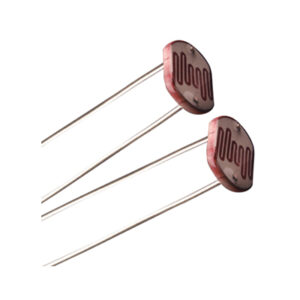This is a seven segment display with two shift registers breakout board. Seven segment LED displays are brighter, more attractive and provide a far viewing distance as well as a wider viewing angle as compared to LCD displays. The major drawback of using seven segment LED’s is they are resource-hungry. Time-division multiplexing is the most common technique of interfacing 7-segment LED’s to micro-controllers. With this technique, an 8-digit seven segment LED display with the decimal point requires at list 16 I/O pins of the micro-controller, which is quite a lot. Consequently, their use with low pin-count micro-controllers (such as PIC12F series) is not practically feasible.
Tenet Technetronics introduces latest version of the 74HC595 based seven segment LED display module that will allow you to shift 8 digits of seven segment LED displays to your project using only 3 I/O pins, and provides full control of all the digit segments including decimal points.
The display module is based on 74HC595 serial in parallel out shift register display driver chip that provides a 3-wire interface to drive 7-segment LED displays (common-anode type) up to 8 digits.
The SN74HC595 is an 8-bit serial-in parallel out shift register that feeds and 8-bit D-type storage register. The storage register has parallel 3 state outputs. Separate clock are provided for both shift and storage register. It has a wide operating voltage of up to 2V to 6V.
Interfacing with the controller:
Instead of connecting around like 10 to 15 LED’s with the shift register to see the shift of data and which requires 10 to 15 GPIO pins so it’s better to go with this breakout which reduces the GPIO pins as well as the wires connection, This breakout board helps in understanding the end user in better way where the user can see the result in a much understandable way.
This can be easily interfaced with any of controllers and even with the raspberry pi it works very much fine. Wherein in shifts the data bit by bit. It has totally 5 pins out of which 2 pins are VCC and ground pins and remaining 3 pins for input pins like clock, latch clock and data pins.
- For more information please visit: tenettech.com
- For technical query please send an e-mail: info@tenettech.com












